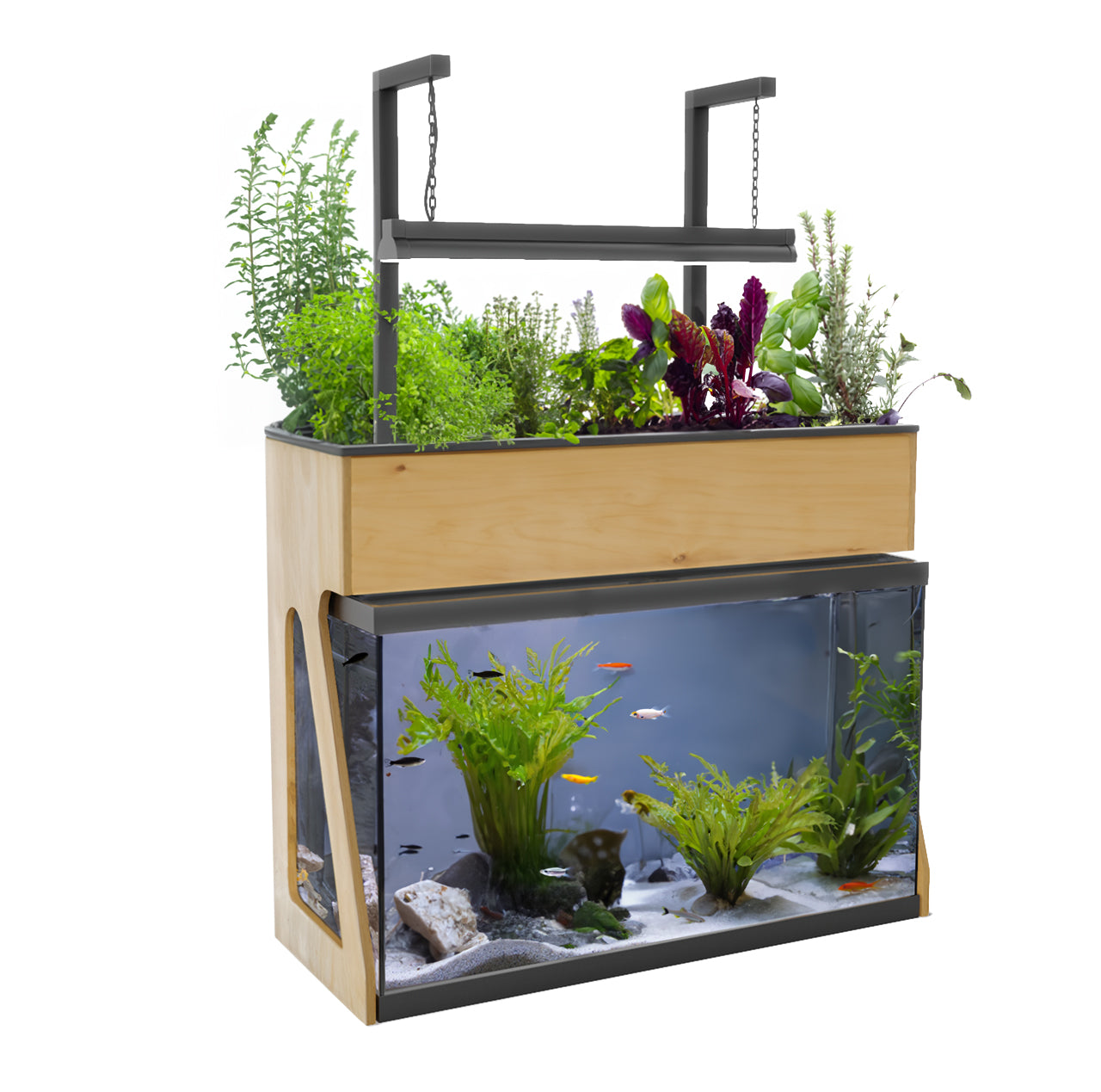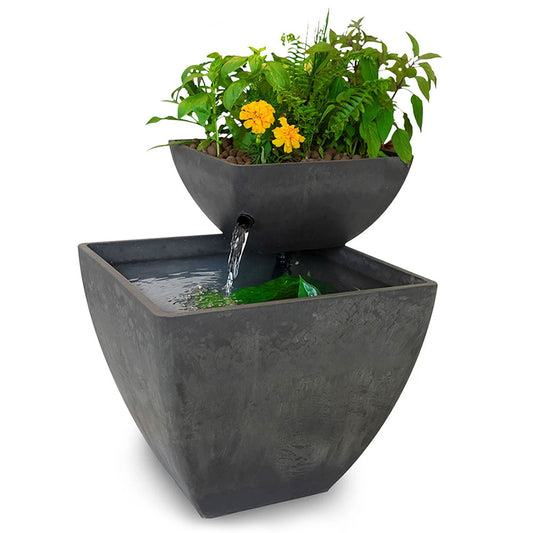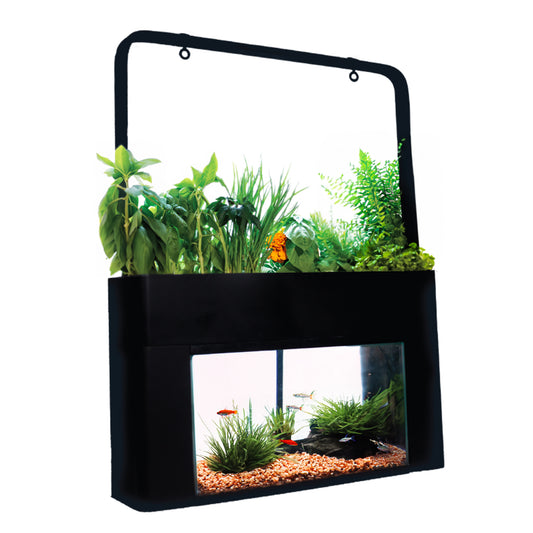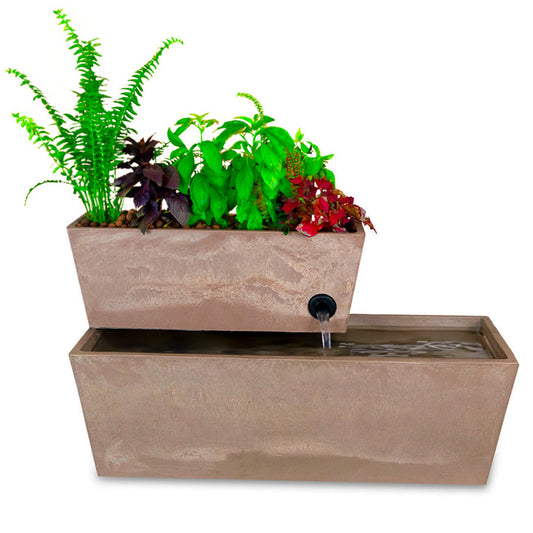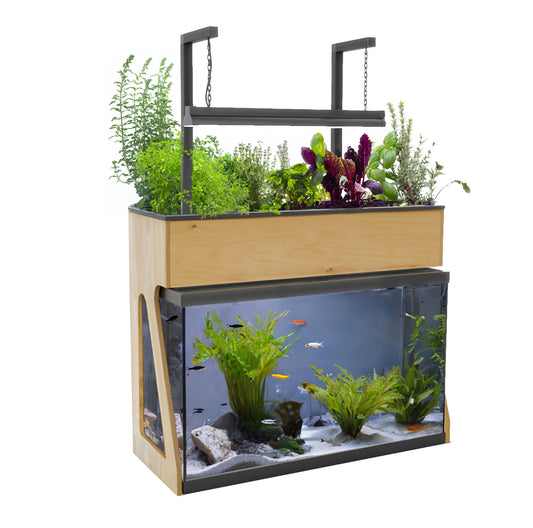Want to grow a meal in your Garden? Craving some vine-ripe tomatoes in January or fresh crisp chile peppers on demand? An indoor vegetable garden takes more work than ornamental houseplants or kitchen herbs, but the rewards of this challenging project include not only garden-fresh produce but the satisfaction of getting the most out of your aquaponic system.

The Biggest Difference For the Biggest Crops
When it comes to growing food, the bottom line is down to physics: you can’t get out more than you put in. Food crops have been selectively cultivated, sometimes for thousands of years, to take in lots of nutrients and lots of sunlight efficiently, and turn all those inputs into the parts of the plant that people like to eat. Vegetables are hungry, and just like you, they need a balanced diet to grow.
A tomato plant is very, very good at turning sunlight into the complex sugars that make up a tomato, but tomatoes are made of more than just sugars. The proteins the plant uses to grow, the trace minerals that give both the plant and fruit their distinctive smells, the pigments that make leaves green and fruits red, all require energy to make and chemical ingredients to build. If the plant lacks any of the necessary ingredients, it won’t be able to grow any further than that one limited supply allows, even if it has plenty of everything else. This is called a limiting factor, and it’s an important concept not just in gardening, but throughout biology and ecology.
Think of it as building a house. A typical home is framed with wood, held together with nails. There’s a lot more wood than metal, and a lot of homebuilding supply is focused on getting the right lumber in the right places. But if you don’t have enough metal, it doesn’t matter how much wood you have. Without the fasteners, the wood won’t hold together. A construction site might be flush with lumber, labor, and equipment, and still grind to a halt for want of a box of nails!
High-performance vegetables will need lots of light, lots of water, and lots of basic fertilizer (whether that comes from fish waste, synthetic supplements, or any other source), but the real key to big yields is to figure out which factors are limiting your production. If you can meet those needs, you’ll get maximum returns on all your inputs, and the best crops you can raise!
The Basics
In many countries, fertilizers are labeled with a standard “NPK” ratio in the format 1 - 1 - 1. NPK indicates the chemical symbols for the elements Nitrogen (N), Phosphorus (P), and Potassium (K), the elements most in demand in plant growth. The ratio simply describes the relative amount of each element in the compounds making up the fertilizer, so a 20 - 5 - 5 fertilizer would be very heavy on nitrogen, while a 0 - 2 - 10 would have no nitrogen at all and be mostly potassium compounds. In high-production agriculture, container gardening, and hydroponics, these ratios are very important, and choosing the correct balance for your plants can make a huge difference in yield.
In aquaponics, most of this primary nutrition will be covered by the elements in fish food and fish waste. Animals also use these elements! The primary solution to any issue with nutrient deficiency in aquaponics is usually to feed your fish more.
There is one very important thing to keep in mind about nutrient balance when growing aquaponically, however: if you’re limited by anything but nitrogen, you’ll end up accumulating nitrogen products like ammonia and nitrate, and that’s dangerous for your fish! In a normal hobby aquaponic system, plants will almost always run out of nitrogen before they run out of anything else; they use a lot of nitrogen compounds in energy metabolism and vegetative growth, and it’s always in high demand. However, if you’re feeding a lot of food and blasting plants with a lot of light to encourage fast growth, your plants can run out of other nutrients or minerals before they run out of nitrogen. You can turn this potential problem into useful information: if you notice nitrate accumulating in your system, that’s a clear signal that something else is missing. Figuring out what is just a process of elimination.
Vitamins, Minerals, and Unlocking Your Growing Potential
There are a few common deficiencies that aquaponic growers encounter. They can often be identified by the effects on the plants. (You can learn more about nutrient deficiencies in the Plants section of our Support Center!) If you repeatedly encounter trouble, there are test kits available you can use to track commonly limiting minerals. With just a little bit of preparation, you can usually learn about the major nutrient needs of the plants you’re growing and be ready before you ever run into trouble!
For growing big, beautiful vegetables, you’re most likely to need three supplements: iron, potassium, and calcium. None of these are typically very soluble in water, so hydroponic and aquaponic plants can run out quickly. The subject of fertilizers is too big and complicated to cover here, but there are three things to consider when selecting nutrient supplements for your aquaponic system: Is it soluble? Is is fish-safe? And will it discolor the water? (Discoloring the water is not actually dangerous, but many people don’t like it when an iron supplement stains the water in their system rusty orange!) It’s best to consult an expert grower or check reviews when selecting supplements for your aquaponic system.
It’s Not Just About Quantity
When it comes to nutrients, there’s one more factor to consider: you don’t just need to have enough nutrients in your system, you need to have enough available nutrients. All of those essential elements your plants need are present in water in a variety of chemical forms, and the forms they take depend on water conditions such as temperature, pH, and even the presence of other chemicals.
There’s no denying it can get complicated if you try to track individual nutrient levels in your system. The good news is that you don’t have to! A healthy aquaponic system that’s fed good food should only need occasional trace mineral supplements as long as you keep it at an appropriate pH. More than any other chemical factor, pH determines whether nutrients in the water are available to plants. There’s no one right value, but a mildly acidic pH of 6.0-7.0 is a good all-around target where most fish will be happy, nitrification can occur, and most plants will be able to take up enough of the things they need. (Need a refresher on what pH is and how to manage it? Check it out in our Support Center.)
With your nutrient balance taken care of and a stable pH, you’re in good shape for strong vegetable production and ready to think about the next factor: energy.
Power and Light
Adding stronger lights can give your growth a boost if your nutrient game is on point, but even photosynthesizers will burn if you blast them with too much sun. Understanding light spectra and PAR - photosynthetically active radiation - is a subject unto itself, a little too much to get into in today’s article. Just be aware that without energy to drive photosynthesis, your plants won’t be able to make use of the nutrients you’ve so carefully balanced!
Ultimately, the maximum yield of your system will be determined by its size. There’s only so much biomass that can fit into a small volume, and so much light that can reach it! If you keep all these factors in mind, though, you’ll be able to get the absolute most out of the space you’ve got, and that’s something to be proud of!
Keep an eye out for the next part of our high-intensity gardening series!
